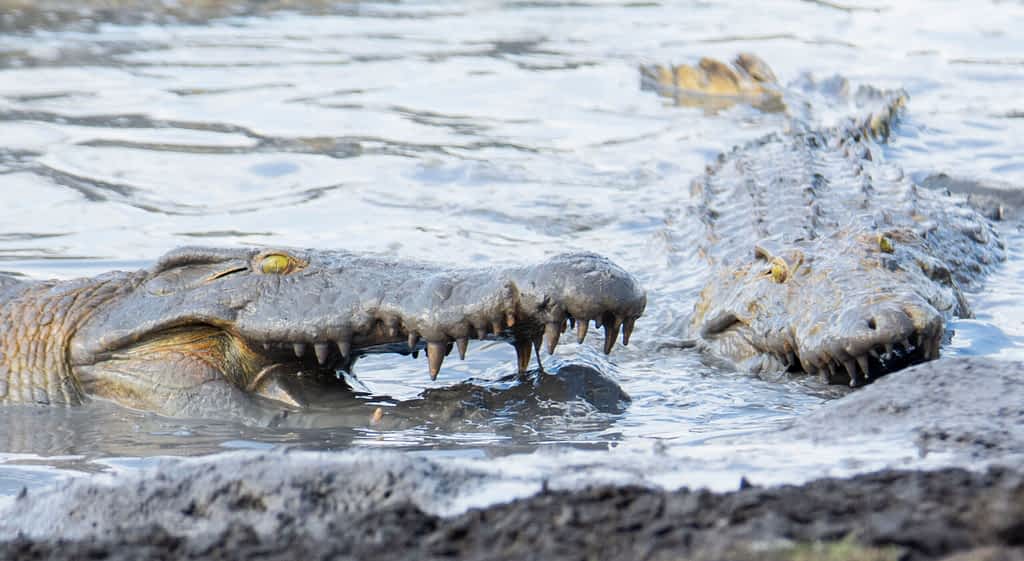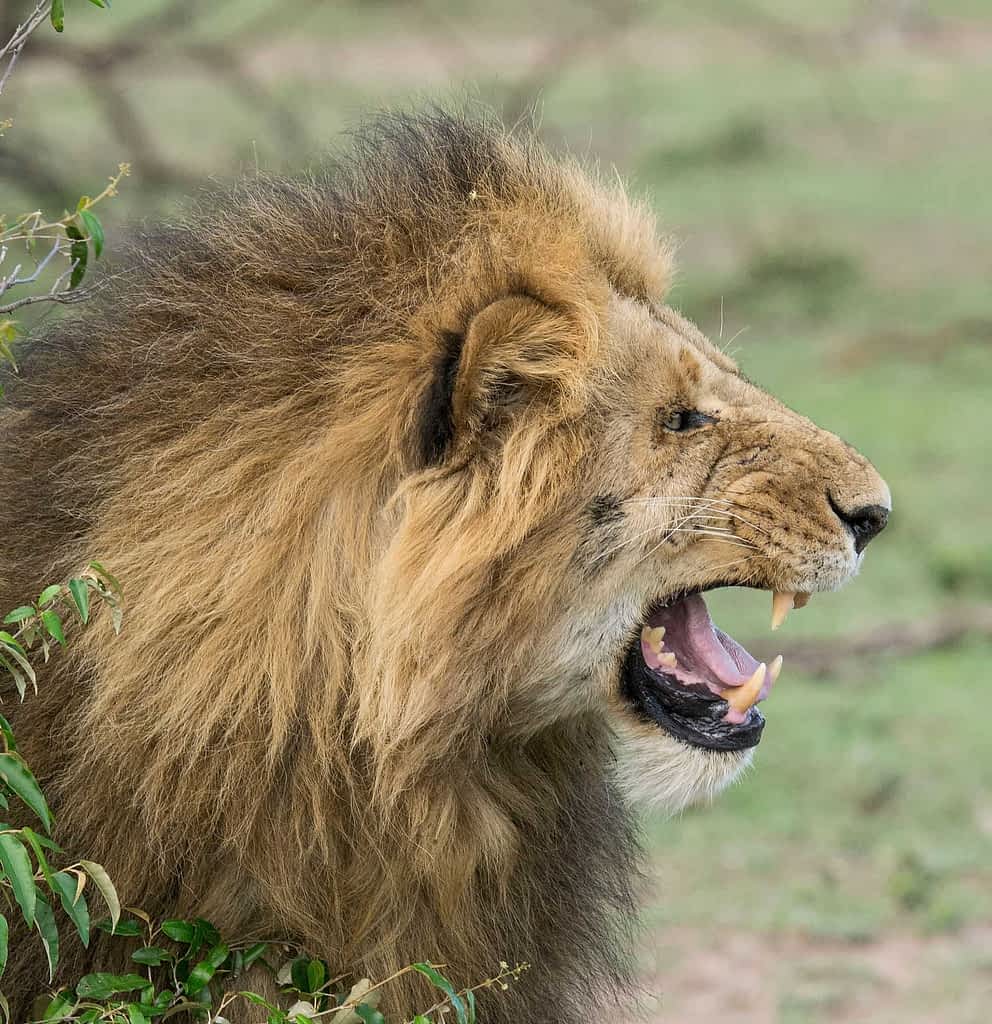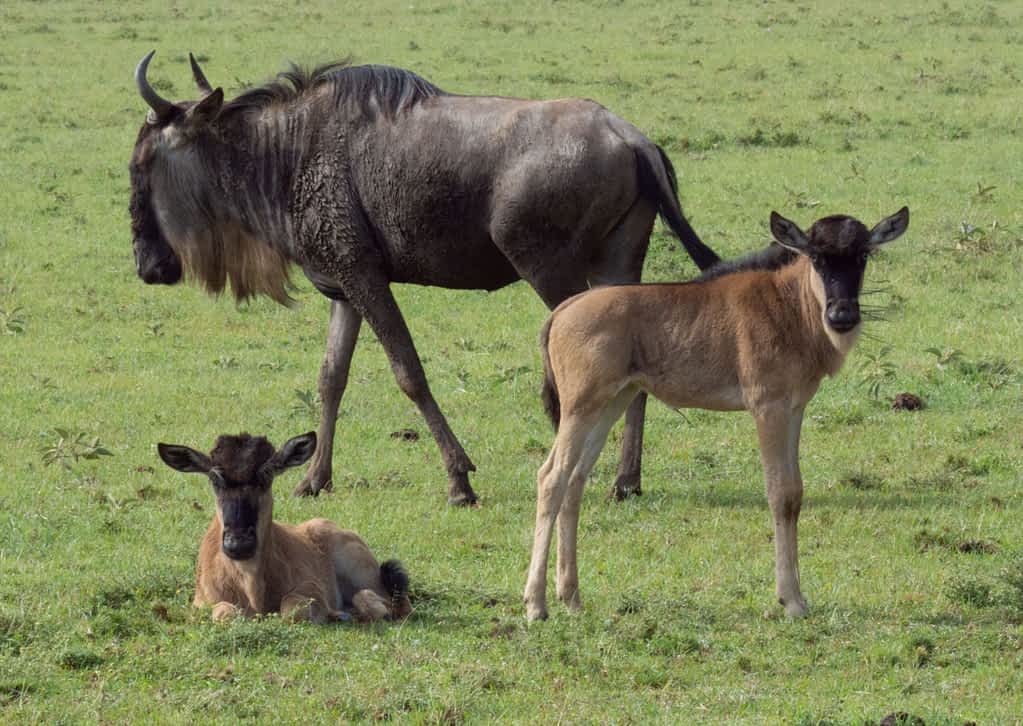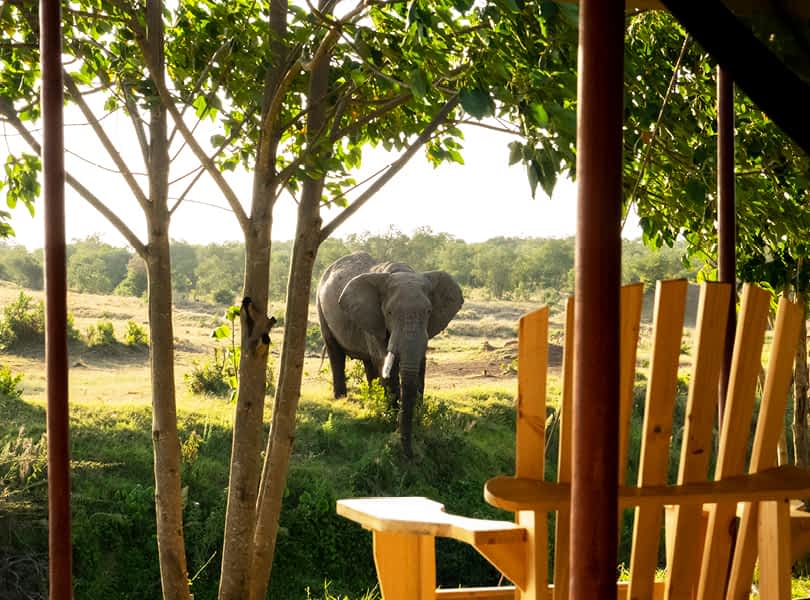The Great Wildebeest Migration is one of the most spectacular natural sights on the planet! Often referred to as one of the “Seven Wonders of the Natural World”, it is the largest overland migration of animals in the world. Over 1.5 million wildebeest, accompanied by thousands of zebras and other antelope make the treacherous journey in a clockwise direction through the Serengeti-Mara ecosystem in search of nutritious grass and water.
Wildebeest, also called gnus, are members of the antelope family. They are closely related to oryxes and gazelles. A wildebeest can grow up to 2.4 meters (8 feet) in length and weigh up to 270 kilograms (600 pounds). In the wild, wildebeest can live up to twenty years.
Wildebeest have developed exceptional survival instincts that they use to travel between 800 and 1,000 kilometers during the migration. Despite the appearance of a confused frenzy, recent research has shown that herds of wildebeest possess what is known as “swarm intelligence”, where animals systematically explore and work together to overcome obstacles as one.

While the Great Migration is often thought of as one mega-herd, the group consists of a massive herd surrounded by numerous smaller herds. Wildebeest have no natural leader so these herds often split up and head in different directions. Maps typically track the movement of the main mega-herd along the cyclical route. However, if you include all of the smaller herds, the entire migration would cover half of the Serengeti (which is 5,700 square miles)!
The migration is extremely dangerous as hungry predators such as lions track the herd looking to catch an easy meal. One of the most popular and dramatic places for visitors to watch the migration is the crossing of the Mara River. Along the banks, hundreds of huge crocodiles arrive waiting for their prey to enter the water.

Even young wildebeest are born prepared for the journey. Each year at the beginning of the yearly migration cycle (between January and March), half a million wildebeest calves are born in the Southern Serengeti. Most of these calves are born in mid-February when approximately 8,000 new wildebeest are born every day for about three weeks! Calves are able to walk as soon as they are born in order to keep up with the herds. Evolution has timed their births perfectly so they have enough strength and coordination when it comes time to cross the Mara River.
The Great Migration is a fairly recent phenomenon that only started in the 1960s. As wildebeest numbers grew, they were forced to migrate to find new sources of food throughout the year. Although zebra and wildebeest migrate together, they graze in harmony with each other since each species consumes different parts of the same grass.
Visitors looking to capture the migration in action will need to carefully plan their trip. While the Great Migration occurs all year in Tanzania, the herd only passes through Kenya from around July to August.
Contact the experts at King Salama Safaris for more information on booking your Great Migration experience.




















